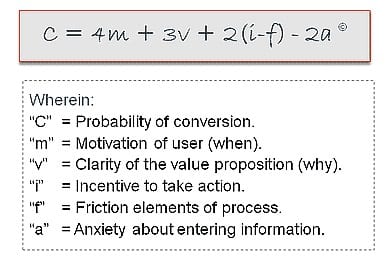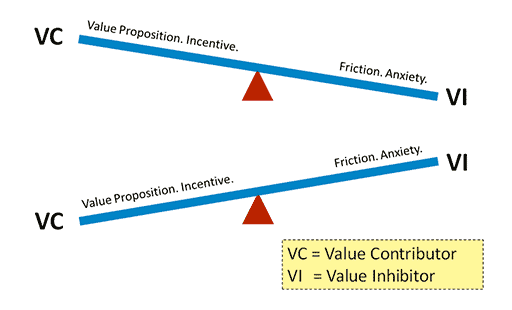Which features do all the best landing pages share?
First impressions are particularly important online - you have only seconds to get your message across. Research from Nature suggested that people form an impression of a site in just 50 milliseconds.
There are many practical actions you can take that influence the effectiveness of landing pages which I have summarised before in a previous post giving examples of best practice for landing pages. The relevance of the headline, prominence of call-to-action and points of resolution plus many other factors are all important. But, if you're running a project to drive more leads or sales from landing pages it's worth taking a step back to think about the fundamentals that will drive better results. Otherwise you can be a victim of Meek Tweaking, which is one of the main limiting factors for making large improvements.
To think through the fundamentals of what makes a successful landing page I think this formula developed by Flint McGloughlin and team at Marketing Experiments is great. We use it in the latest update to our Guide to Landing Page Optimisation to set the scene. We really like the way it simplifies the whole interplay between what the landing page needs to achieve for the business and what the visitor is seeking.

It’s worth thinking about how you can control these elements of the equation as part of a landing page optimisation project. As Flint says:
“Optimization is not simply changing offer page elements, but doing so to better engage with your prospect’s thought process”.
Let's take a look at each of the variables, this is my interpretation:
- Conversion probability (C). What you want to increase, the conversion rate!
- Motivation of visitor (4m). This is given a high weighting - it’s the prime job of the landing page to increase motivation to give a response. The more motivation already available when the visitor arrives on the page, the easier your job will be...
- Value proposition clarity (3v). Simply put “Why should I click that button - What’s in it for me?”. So, emphasising what this value is to different forms of visitors is a key planning decision before you can build the landing page.
- Incentive to take action (i). These are offers additional to the core value proposition such as a time-limited offer or bonus if the action is taken.
- Friction elements of process (f). There are many friction elements centred around the effort needed from the user, i.e. time or hassle. The number of fields, or if a multi-step process, pages required to sign-up are the obvious friction components. Notice how, in the equation a more powerful incentive (i) will overcome the friction elements.
- Anxiety about entering information (a). Straightforward, this is the fear of privacy and security for personal data. It’s important to reassure about these.
Of course the strength of each element will vary for different types of visitors and how well your page is already performing, but this is really what effective landing pages boil down to. Improving landing pages is fundamentally about getting the balance right between value and friction and this is nicely summarised by this diagram.
 If you think about it, this balance applies across a complete website and it's the job of the digital marketer to change the balance so that value exceeds friction for different audiences and propositions.
If you think about it, this balance applies across a complete website and it's the job of the digital marketer to change the balance so that value exceeds friction for different audiences and propositions.








